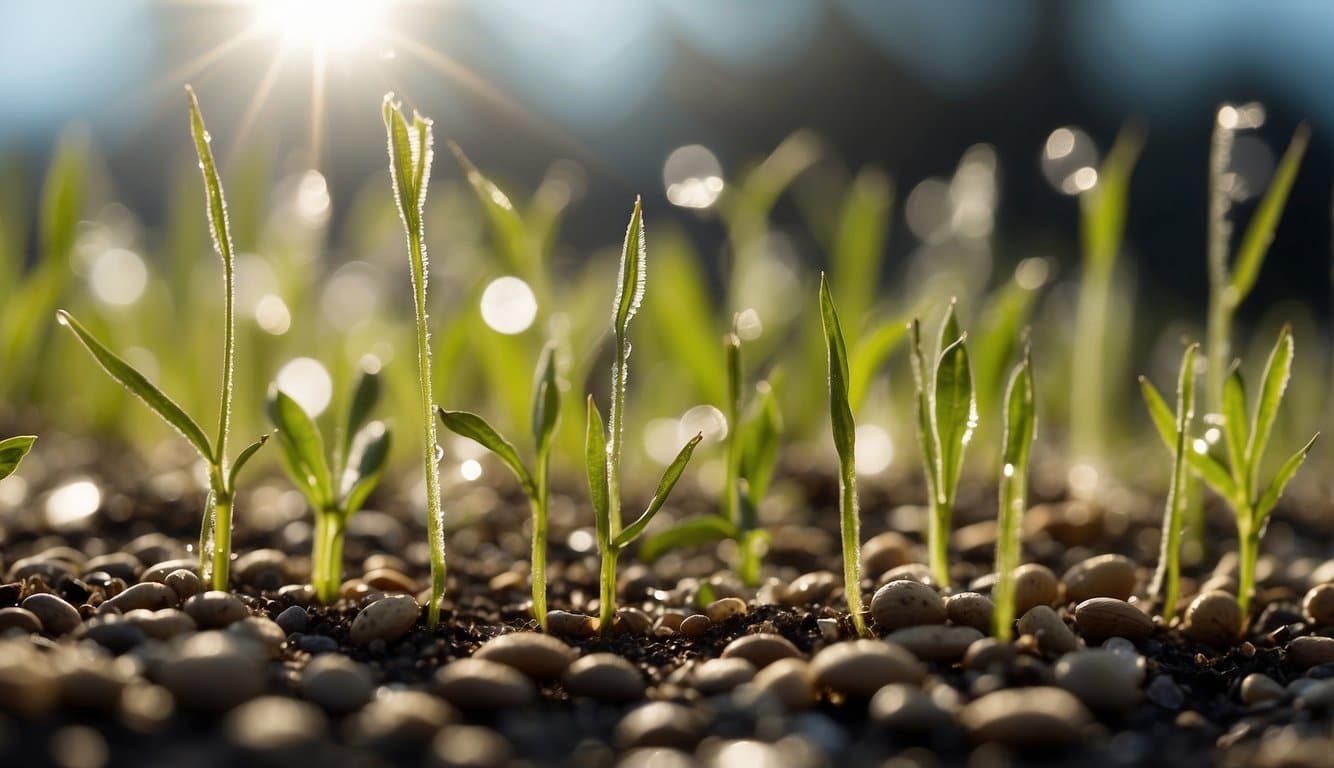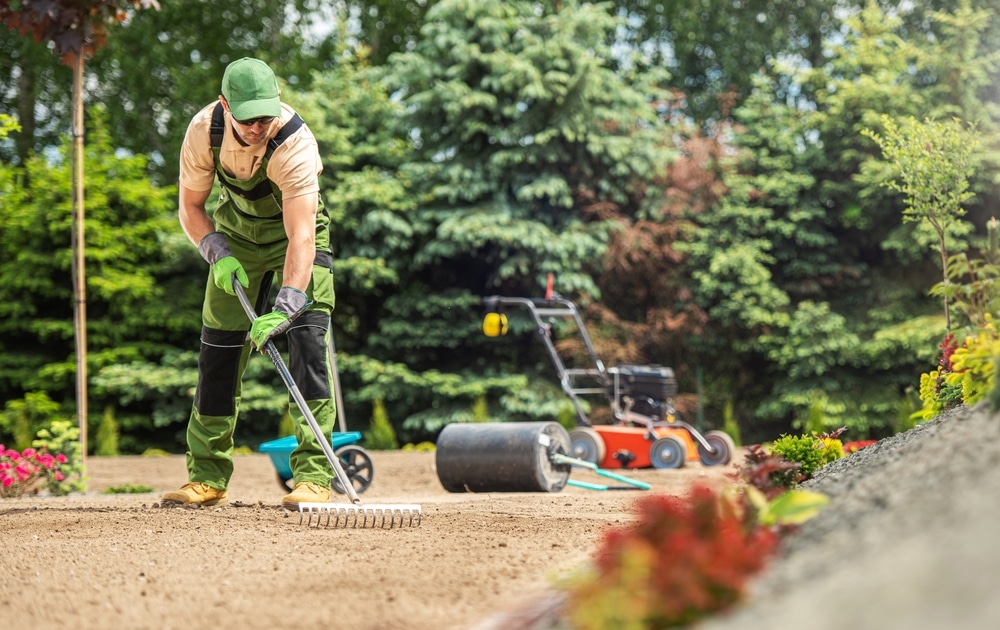Climate Dynamics and Grass Seed Ecology
Climate change is fundamentally altering the environments where grass species grow, with significant implications for the viability of their seeds.
As an enthusiast for the outdoors, you’ll find understanding these changes crucial for both conservation and agricultural practices. Here are key factors influencing grass seed ecology:
- Temperature Fluctuations:
- Warmer temperatures can accelerate seed germination.
- High heat may negatively impact seed development.
- Altered Precipitation Patterns:
- Shifts in rainfall timing and intensity affect seed bank moisture levels.
- Drought conditions can drastically reduce seed survival rates.
- Increased Carbon Dioxide (CO2):
- Elevated CO2 levels can boost photosynthesis but alter plant nutrient content.
Understanding these impacts is vital, considering grasslands are home to diverse species and serve as critical carbon sinks.
Your acknowledgement of these dynamics will shape how grasslands are managed. Here are some consequences stemming from climate-induced shifts:
- Seed bank diversity decline — prolonged drought conditions can decrease the variety of species in seed banks.
- Germination and vigor variations — increased temperatures during seed development can lead to smaller, less fertile seeds, as seen in some cereal and legume crops.
- Management challenges — grappling with the effects of both climate variability and human interventions, such as prescribed burns, on grassland restoration.
Emphasis on seed sourcing strategies is critical, where choosing the right seeds can help ensure ecological restoration is successful in changing climates.
Consider the challenges of traditional “local is best” approaches amid climate shifts, as detailed in research on ecological restoration under climate change.
Effects of Temperature and Precipitation on Seed Viability
The viability of grass seeds is heavily influenced by environmental factors; specifically, temperature and precipitation play pivotal roles in determining germination success and seed dormancy.
Temperature Fluctuations and Germination Rates
- Consistent Warmth: Grass seeds typically require a range of consistent temperatures to successfully germinate.
- A study published in Nature highlights that significant deviations away from these temperature norms can severely reduce germination rates.
- Extreme Cold or Heat: Exposure to temperatures that are too cold, or alternatively, too hot, can damage seeds, preventing germination entirely.
- For example, research indicates that increased temperatures can reduce the viability of seeds by effectively “cooking” the seed or disrupting its metabolic processes.
Precipitation Patterns and Seed Dormancy
- Adequate Moisture: Adequate levels of rainfall are essential for soil moisture, which in turn, stimulates germination. Without sufficient water, seeds can remain dormant for extended periods.
- Erratic Rainfall: Conversely, erratic and heavy rainfall can lead to waterlogged conditions, which can suffocate seeds and promote fungal diseases, directly impacting seed viability, as documented by a study listed in the Wiley Online Library concerning soil pH and nitrogen levels.
Each of these environmental parameters plays a critical role in the lifecycle of grass seeds, and with the backdrop of climate change, understanding the interaction between temperature, precipitation, and seed viability is essential for sustainable crop management.
Soil Conditions and Nutrient Availability
As the climate warms, your grass seeds’ viability will increasingly depend on the evolving soil conditions and nutrient availability. These elements are crucial for healthy seed development and sustainable grass growth.
Soil Composition Changes
Climate change induces significant shifts in soil composition that can affect grass seed viability:
- Organic matter: Vital for holding moisture and nutrients, reduced organic matter can lead to poorer seed growth.
- Soil pH: Changes can alter microorganism activity, impacting nutrient solubilization and availability to seeds.
By monitoring these changes, you can take steps to amend soil conditions, ensuring your grass seeds have a suitable environment for germination.
Nutrient Cycling and Seed Development
Nutrient availability is a key player in seed development. Efficient nutrient cycling ensures seeds have the necessary elements for germination and early growth:
- Nitrogen: Essential for seed protein synthesis.
- Phosphorus: Supports energy transfer and root development.
- Potassium: Regulates osmotic balance, influencing seed hydration.
Proactive soil management can bolster these cycles, thereby supporting robust grass seed development in the face of climate change.
Biotic Interactions Influencing Grass Seed Viability
Your grass seed’s success hinges not just on the weather but on living organisms too. Let’s dive into how pollinators and pests play their part.
Pollinator Activity and Seed Fertilization
- Pollinators: They’re your seed’s best pals for fertilization. Without them, the chances of your grass seeds developing properly can take a nosedive. Bees, butterflies, and other insects ensure:
- Cross-pollination to boost genetic diversity
- Improved seed set and viability for a lush lawn
Pests and Pathogens Impacts
- Pests: Uninvited guests like aphids and grubs are more than a nuisance. They:
- Drain nutrients from grass plants
- Cut down on the viable seed yield
- Pathogens: Disease-causing organisms like fungi can wreak havoc. They:
- Decrease seed germination rates
- Lead to poor seedling development
Remember, the fate of your future lawn rests in the tiny hands (or feet) of these crucial biotic players. Keep an eye out for these interactions to ensure maximum grass seed viability.
Adaptation Strategies for Grass Seed Preservation
Climate change poses rising challenges to grass seed viability, but strategic measures can sustain seed preservation. Utilize seed banking for storage and genetic improvement to enhance resilience.
Seed Banking and Ex Situ Conservation
- Seed Storage: Preserving the genetic diversity of grass seeds involves banking seeds in temperature and humidity-controlled environments.
- Key Benefit: Seeds maintain viability over extended periods, ready for restoration projects.
- Cryopreservation: More advanced strategies involve freezing seeds at extremely low temperatures to halt the aging process.
- Notable Example: The Svalbard Global Seed Vault provides a secure backup facility for the world’s crop diversity.
Genetic Modification and Breeding for Resilience
- Selective Breeding: Enhancing traits such as drought tolerance can be achieved through traditional selective breeding, tailoring seeds to thrive under changing conditions.
- Study Insight: A study by Frontiers highlights the benefits of using regional biodiversity to inform seed selection for future climates.
- Genetic Engineering: Developing seeds that can withstand extreme weather patterns might require direct genetic modifications.
- Progressive Approach: Research into genetic modification methods is paving the way for crops to better adapt to climatic stresses.
Frequently Asked Questions
The impacts of climate change on grass seed viability are increasingly significant for agriculture and biodiversity. Addressing your pressing questions, the section below aims to clarify the various aspects of this issue.
What are the effects of increasing temperatures on grass seed germination and growth?
Elevated temperatures can stress grass seeds, potentially reducing germination rates and altering growth patterns. Higher temperatures may trigger quicker germination but can also lead to reduced seed vigor, affecting long-term plant health.
In what ways does changing precipitation patterns influence the viability of grass seeds?
Fluctuating precipitation patterns can lead to either drought or waterlogging, both of which harm grass seed viability. Drought conditions limit the availability of necessary moisture for seed germination, while excessive rainfall may cause rot or fungal diseases.
How might CO2 concentration levels in the atmosphere impact grass seed development?
Increased CO2 concentrations can have a mixed impact on grass seeds. Some studies suggest that seeds might grow larger or more numerous, while others reveal potential quality issues, highlighting the need for deeper exploration into how grass seeds respond to changes in atmospheric CO2.
What measures can be taken to protect grass seed viability against extreme weather events linked to climate change?
To safeguard grass seed viability:
- Develop stress-tolerant seed varieties.
- Implement strategies for moisture conservation and efficient irrigation.
- Construct protective infrastructure to shield seeds during critical developmental stages.
How are grassland ecosystems’ biodiversity and grass seed viability interconnected in the context of climate change?
Grassland biodiversity is essential for the resilience of ecosystems, directly affecting grass seed viability.
A diverse gene pool enables grass species to better withstand environmental stresses, ensuring sustainable seed production and viable future generations.
What research has been conducted on the adaptation of grass seeds to the environmental stresses caused by climate change?
Research is ongoing to assess how seeds adapt to climate stressors.
Studies are focusing on genetic responses and the selection of traits conducive to resilience.
Further investigation into these adaptive strategies is vital for the successful management of grass seeds in changing climates.

